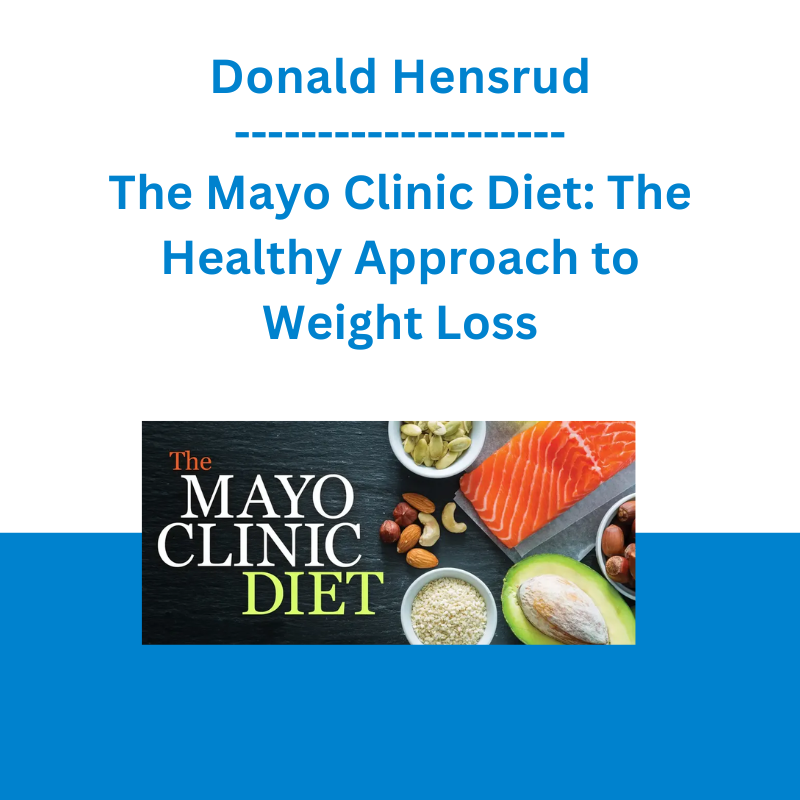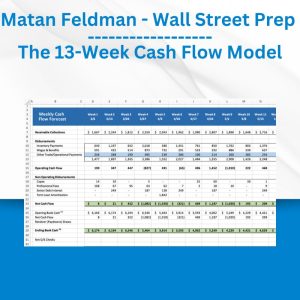*** Proof of Product ***
Exploring the Essential Features of “Donald Hensrud – The Mayo Clinic Diet: The Healthy Approach to Weight Loss”
The Mayo Clinic Diet: The Healthy Approach to Weight Loss
Donald D. Hensrud, M.D., M.P.H. Professor, Mayo Clinic
Professor Donald D. Hensrud, M.D., M.P.H.
Effectively managing weight is one of the biggest paradoxes I know. It sounds easy–eat less and exercise more–but the factors that go into that seemingly simple statement are tremendously complex.
Institution Mayo Clinic
Donald D. Hensrud, M.D., M.P.H., has been a member of the Mayo Clinic staff for 25 years and currently serves as Associate Professor of Nutrition and Preventive Medicine at Mayo Clinic and Director of the Mayo Clinic Healthy Living Program. Dr. Hensrud holds four academic degrees: a B.S., an M.D., and Master’s Degrees in public health and nutrition sciences. He is board certified in the fields of Internal Medicine, Nutrition, and Preventive Medicine, and is a fellow of both the American College of Physicians and The Obesity Society.
Dr. Hensrud has authored numerous scientific articles and book chapters and has contributed to lay education as editor of the books Mayo Clinic Healthy Weight for EveryBody, The New Mayo Clinic Cookbook, The Mayo Clinic Plan: 10 Essential Steps to a Better Body and Healthier Life, and the New York Times bestseller The Mayo Clinic Diet. He was coeditor of the medical text Clinical Preventive Medicine and wrote a monthly health column for Fortune magazine for several years.
Dr. Hensrud has received the Charles E. Kupchella Preventive Medicine and Wellness Award from the University of North Dakota and the Distinguished Alumni Award from The University of Alabama at Birmingham. He consistently appears on the Best Doctors in America List.
Course Overview
Most of us know we should eat less and exercise more to lose weight. It’s a simple concept to understand. But if it were simple to implement, none of us would have an issue with our weight, and obesity would not be a national health concern. However, science has revealed that the ability to lose weight and maintain that loss is affected by a complex web of hundreds of physical, mental, and emotional factors.
After years of research and clinical study to identify the most important factors, Mayo Clinic has developed a plan—a fresh and practical weight-loss program that gives everyone the very best chance for success. This is not another fad diet leading to extreme short-term weight loss that’s impossible to maintain. The Mayo Clinic Diet is a straightforward plan with endless food possibilities based on a simple framework of adding five new habits, breaking five old habits, and adopting five bonus habits.
In The Mayo Clinic Diet: The Healthy Approach to Weight Loss, Donald D. Hensrud, M.D., M.P.H., shares practical tips to help you implement the behavioral changes needed to lose weight and keep it off. In 12 engaging lectures reinforced by explanatory visuals and exciting demonstrations, you will learn about setting your caloric goals, food prep shortcuts, developing a physical activity plan, and tracking your progress.
But this course also will take you a step further as you learn how your thoughts and emotions affect your weight loss, including:
- determining whether or not this is the right time for you to start a weight-loss program
- how to identify your personal motivation to lose weight
- why perfectionism doesn’t work
- taking responsibility for determining which changes you’re willing to make and how you can modify the Diet’s suggestions to meet your goals
- identifying your weaknesses and triggers so you can adjust your plan accordingly
- the crucial interplay between guilt and forgiveness
- how to identify appropriate personal goals—short-term and long-term, outcome, and performance
Mayo Clinic experts know that people who start a weight-loss program are more likely to stick with it when they see fairly quick results. But they also know achieving and maintaining a healthy weight requires a long-term plan. That’s why The Mayo Clinic Diet has a two-part strategy: Lose It! is the initial two-week plan designed to give you a safe and healthy jump-start on your weight loss, and Live It! is a lifelong approach to help you meet and maintain your goal weight.
Hands-On Demonstrations: Right There with You
In addition to Dr. Hensrud’s expert guidance, the personable Chef Jen Welper is the “secret sauce” of The Mayo Clinic Diet: The Healthy Approach to Weight Loss. The Diet comes alive during numerous real-time kitchen demonstrations with Chef Jen talking directly to you, pulling for your success every step of the way. Her title, Executive Wellness Chef at the Mayo Clinic Healthy Living Program, tells you she’s a consummate professional who knows her way around food science and a commercial kitchen. But her relaxed, conversational manner—along with numerous, practical shortcut tips for shopping, prepping, and cooking—shows how well she understands your busy life and how important it is for you to make the best use of time in your own kitchen.
Don’t want to make trips to the market every day for fresh ingredients? You’ll be surprised to learn all the many frozen fruits and vegetables that can be just as healthy—and in some cases, even healthier—than fresh. Don’t feel like cutting up large, fresh fruits, such as melons or pineapple? Chef Jen understands and suggests buying pre-cut. Don’t have the time to cook brown rice or other whole grains? Buy them already cooked in the freezer section. Can’t imagine making five or six different meals in under an hour? Just watch! As Chef Jen demonstrates everything from slicing and dicing to searing, grilling, and roasting, her easygoing, down-to-earth manner will help you build your own meal-prep confidence and excitement.
Satiety—What It Is and Why It Matters
Satiety is that comfortable feeling we get after we’ve eaten an appropriate amount of food in response to hunger, the feeling that tells us when it’s time to stop eating and put the food away, no matter how much is left on our plate. Satiety arises from a complex interplay of body chemistry, emotional make-up, and habit. Basic biology has taught us that, for animals with an abundant food supply, satiety is an important feedback mechanism for maintaining health and preventing overeating. But U.S. obesity statistics tell us we have a lot to learn.
First, we don’t pay attention. Almost all of us have had the experience of eating beyond the point of satiety, sometimes way beyond. That oh-my-gosh-I’ve-eaten-so-much-I-am-sick feeling tells us we’ve been concentrating on the oral sensations of taste and texture but ignoring signals from the rest of our body. Or maybe we rarely overeat to the point of stomachache, but we habitually eat past satiety at almost every meal. Why? Maybe we’re focused on an activity, such as watching TV, and we don’t realize how much we’re eating.
Our second problem is that there are so many unhealthy ways to reach satiety. What to choose? Although most of us are aware of the relative number of calories in a variety of foods, we don’t think in terms of calories when we’re hungry. When we’re hungry, we want food. And when we’re really hungry, we want the food that’s closest at hand.
In The Mayo Clinic Diet: The Healthy Approach to Weight Loss, you’ll learn:
- which habits will help you better pay attention to the signals your body sends when you’re hungry and when you eat, and which habits are likely to drown out those signals
- how to schedule your meals and snacks to best achieve a healthy satiety
- how to keep your pantry and refrigerator stocked with delicious, low-energy-dense foods that will help you lose weight by reaching satiety with fewer calories
As Dr. Hensrud explains, The Mayo Clinic Diet was developed with only one goal in mind—to help you feel better and become healthier by following an eating and exercise program that fits comfortably into your real life. You don’t have to follow it to perfection, but by identifying your personal goals and applying the principles of The Mayo Clinic Diet, you will find yourself on a path to better health and greater happiness.
12 Lectures
1 The Science of Weight and Weight Loss
With more than two-thirds of U.S. adults either overweight or obese, weight is clearly a national health concern. But how important is it for you to lose weight? Learn how your body-mass index, waist circumference, and medical history each impact your health. You’ll be surprised to learn which factors are most important and why.
2 Getting Ready for The Mayo Clinic Diet
Learn how to prepare your kitchen and what other tools you’ll need to begin Lose It!—the two-week jump-start phase of The Mayo Clinic Diet. But first, take this quiz to answer a fundamental question: Is this the right time for you to start a weight-loss program? Or are there other underlying issues to be addressed first?
3 Starting Your Diet: The Lose It! Phase
Learn the five specific habits to add to your daily routine for the first two weeks of the program, the five habits to remove, and the bonus habits that will give your weight-loss journey the best possible jump-start. These changes are designed to bump you out of your comfort zone and head you in a different, healthier direction—but in ways that are both doable and nutritionally sound.
4 Assessing Your Weight-Loss Progress
If you couldn’t follow every detail of the Lose It! program for the full two weeks, don’t worry. Chances are you did change some habits, and that is the beginning of success. Going forward, you can give yourself a bit of leeway on some habits—but others are too fundamental to your weight-loss success to be negotiable.
5 Maintaining Your Program: The Live It! Phase
As you move into the long-term Live It! portion of the Mayo Clinic Diet, you’ll learn how to realistically set your personal outcome and performance goals, as well as your daily caloric intake. With The Mayo Clinic Healthy Weight Pyramid as your guide, you’ll see that no foods are completely off limits as long as you understand the crucial difference between serving size and portion size.
6 Tracking Your Weight-Loss Progress
While you can use any method that’s convenient for you to track your daily food intake and activity—from pencil and paper to smartphone apps—the tracking itself is crucial for success as you begin the long-term portion of The Mayo Clinic Diet. Learn exactly what and when to track for maximum efficacy. But tracking your weight? That’s a more personal matter.
7 Adapting The Mayo Clinic Diet
The Mayo Clinic Diet is an adaptable plan that can work whether you’re in your home kitchen or out on the road. If you usually follow a vegetarian, vegan, Mediterranean, or DASH diet (for hypertension), no problem. These and other eating plans fit well within the framework of The Mayo Clinic Diet. With these five healthy cooking techniques and the five criteria for any food, you’ll be on your way.
8 Exercise, Activity, and Health
Physical exercise provides a variety of health benefits with respect to heart disease, blood pressure, cognitive function, mood, diabetes, and some cancers—as well as helping the body lose weight and maintain that loss. In addition to structured exercise, learn how to incorporate more Non-Exercise Activity Thermogenesis (NEAT) into your day.
9 Behavioral Strategies for Weight Loss
Many people believe they don’t have enough willpower to lose weight and keep it off. But the real issue is having the amount of willpower you need exactly when you need it—and you can plan for that. Learn how to give yourself every opportunity to be successful in changing your behavior long-term, and about the significant interplay between guilt and forgiveness.
10 Cooking The Mayo Clinic Diet Way
How to plan healthier meals? Chef Jen makes it easy! With her simple suggestions for grocery shopping and easy-to-follow cooking demonstrations, you’ll learn to cross-utilize your ingredients to maximize efficiency in the kitchen. From barbeque pita pizza to pesto shrimp pasta, these delicious meals will help you meet your weight-loss goals.
11 Overcoming Obstacles to Weight Loss
Everyone who undertakes a long-term plan to improve health will face obstacles. Learn to anticipate specific challenges and plan your work-arounds in advance. Whether it’s grocery shopping, cooking, eating out, getting your family on board with food changes, or prioritizing exercise, you can identify and overcome potential obstacles to your optimum health. You can be successful.
12 Handling Lapses and Keeping Weight Off
Some days you will eat too much, and some days you won’t exercise, not even for five minutes. It happens to everyone. And eventually, you may even hit a plateau in your weight loss. Learn the best ways to keep negative self-talk at bay and continue to move forward toward better health, instead of expecting unattainable perfection and relapsing into old habits.
What’s Included?
Instant Video
- Download 12 video lectures to your computer or mobile app
- Downloadable PDF of the course guidebook
DVD
- 12 lectures on 2 DVDs
- 149-page printed course guidebook
- Downloadable PDF of the course guidebook
- Closed captioning available
What Will You Learn?
- Learn how to prepare and cook delicious, healthy foods.
- Discover how your emotions affect your eating, exercise, and weight loss.
- Look at how to anticipate and overcome weight-loss challenges.
Please see the full list of alternative group-buy courses available here: https://lunacourse.com/shop/










 Alphashark - The AlphaShark SV-Scalper
Alphashark - The AlphaShark SV-Scalper  Team NFT Money - Ultimate NFT Playbook
Team NFT Money - Ultimate NFT Playbook  Akil Stokes & Jason Graystone - TierOneTrading - Trading Edge 2019
Akil Stokes & Jason Graystone - TierOneTrading - Trading Edge 2019  Erik Banks - Alternative Risk Transfer
Erik Banks - Alternative Risk Transfer  Money Miracle - George Angell - Use Other Peoples Money To Make You Rich
Money Miracle - George Angell - Use Other Peoples Money To Make You Rich